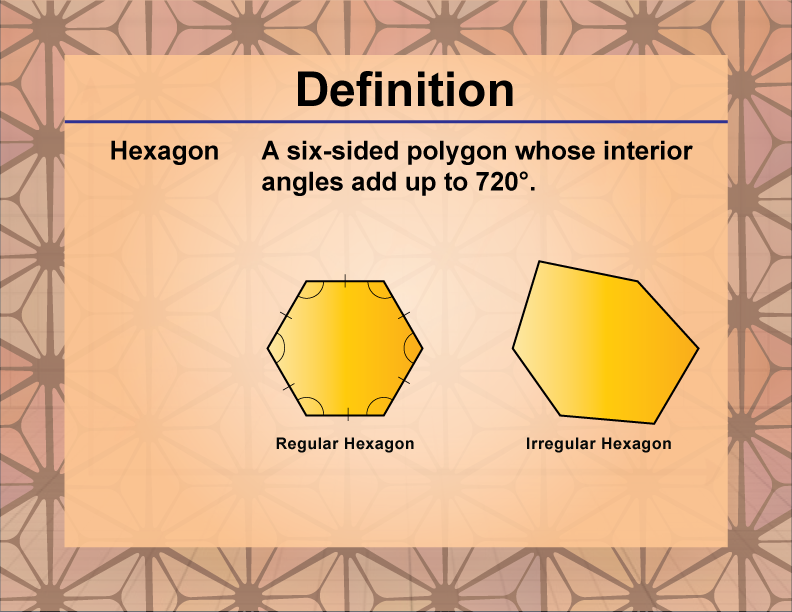
Display Title
Definition--Polygon Concepts--Hexagon
Display Title
Hexagon

Topic
Polygons
Definition
A hexagon is a six-sided polygon with six vertices and six interior angles.
Description
Hexagons play a significant role in geometry and are frequently observed in nature and human-made structures. As a regular polygon, the hexagon possesses unique properties that make it both mathematically interesting and practically useful. Each interior angle of a regular hexagon measures 120°, and the sum of all interior angles is 720°. This shape is notable for its efficiency in space-filling, which is why it's commonly found in structures like honeycombs.
In geometry, hexagons are studied for their symmetrical properties and their relationship to other shapes. They can be constructed using a compass and straightedge, making them important in geometric drawing and design. Hexagons also have applications in various fields, including architecture, engineering, and even molecular structures in chemistry. The hexagon's prevalence in nature, such as in snowflakes and the compound eyes of insects, demonstrates its structural efficiency. This natural occurrence has inspired many human-made designs, from floor tiles to architectural elements. Understanding hexagons is crucial for students of geometry, as it introduces concepts of regular polygons, angle measurements, and spatial reasoning.
For a complete collection of terms related to polygons click on this link: Polygons Collection.
| Common Core Standards | CCSS.MATH.CONTENT.5.G.B.3, CCSS.MATH.CONTENT.5.G.B.4, CCSS.MATH.CONTENT.3.G.A.1, CCSS.MATH.CONTENT.3.MD.D.8, CCSS.MATH.CONTENT.6.G.A.1, CCSS.MATH.CONTENT.6.G.A.3, CCSS.MATH.CONTENT.HSG.CO.A.3 |
|---|---|
| Grade Range | 3 - 8 |
| Curriculum Nodes |
Geometry • Polygons • Definition of a Polygon |
| Copyright Year | 2013 |
| Keywords | polygon, definitions, glossary term |